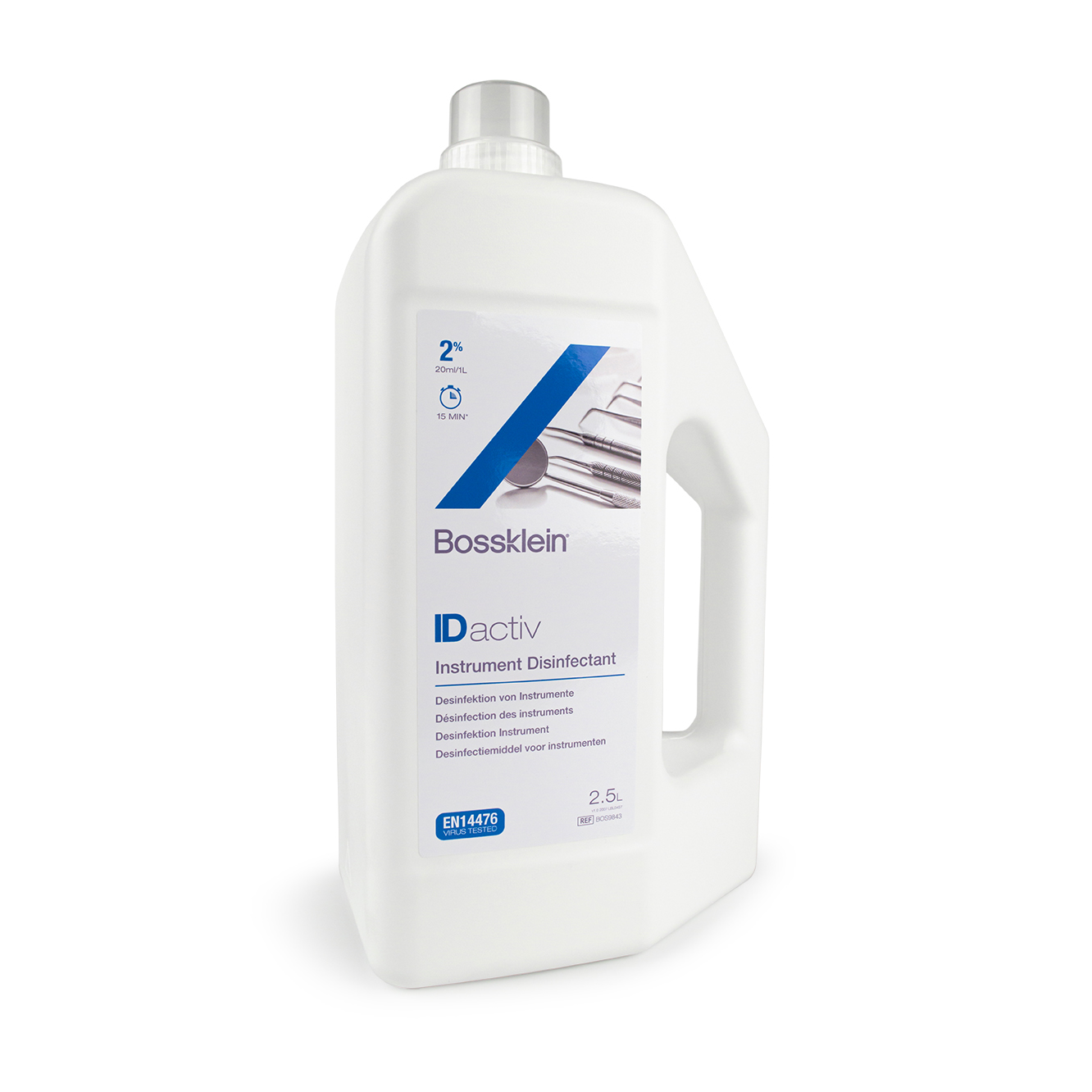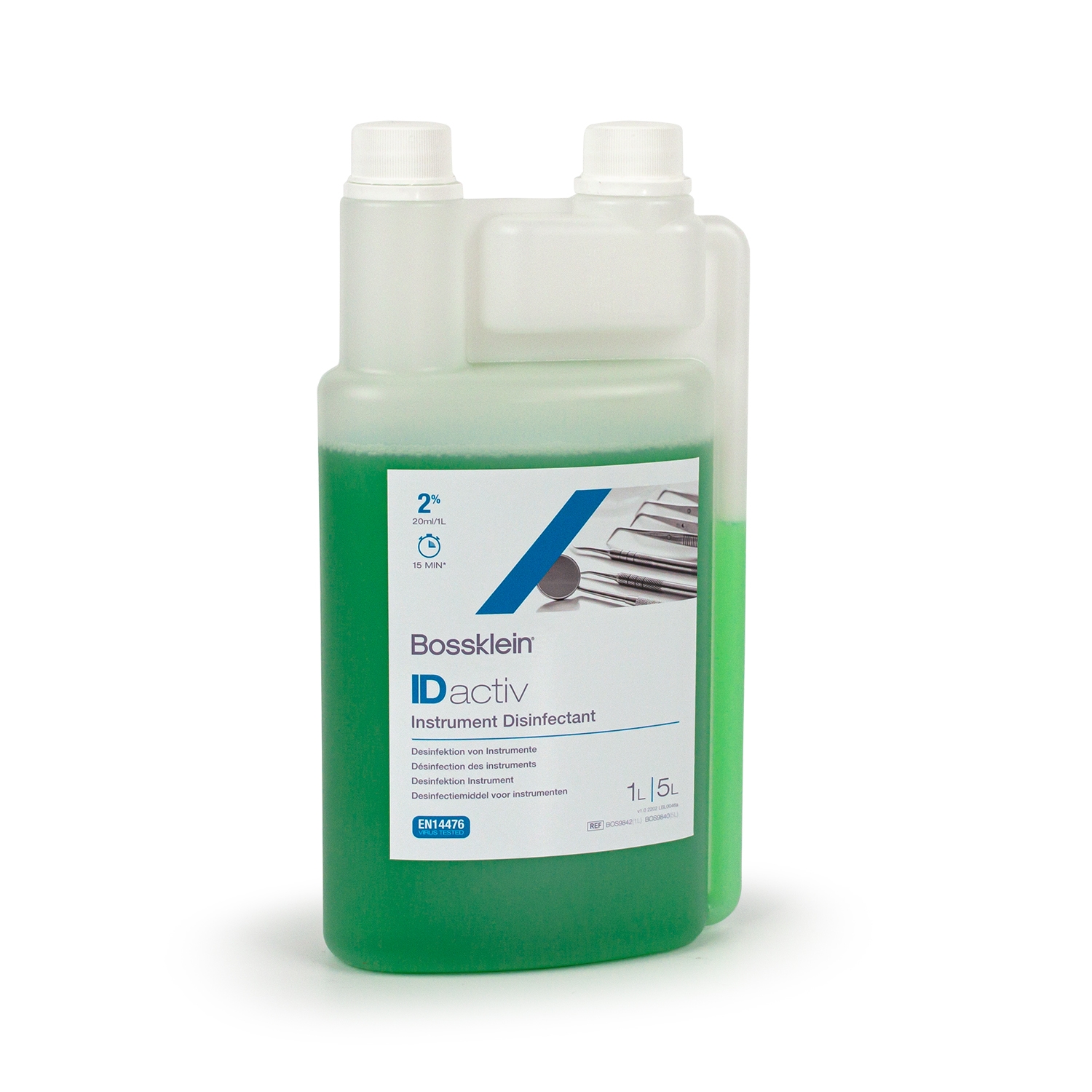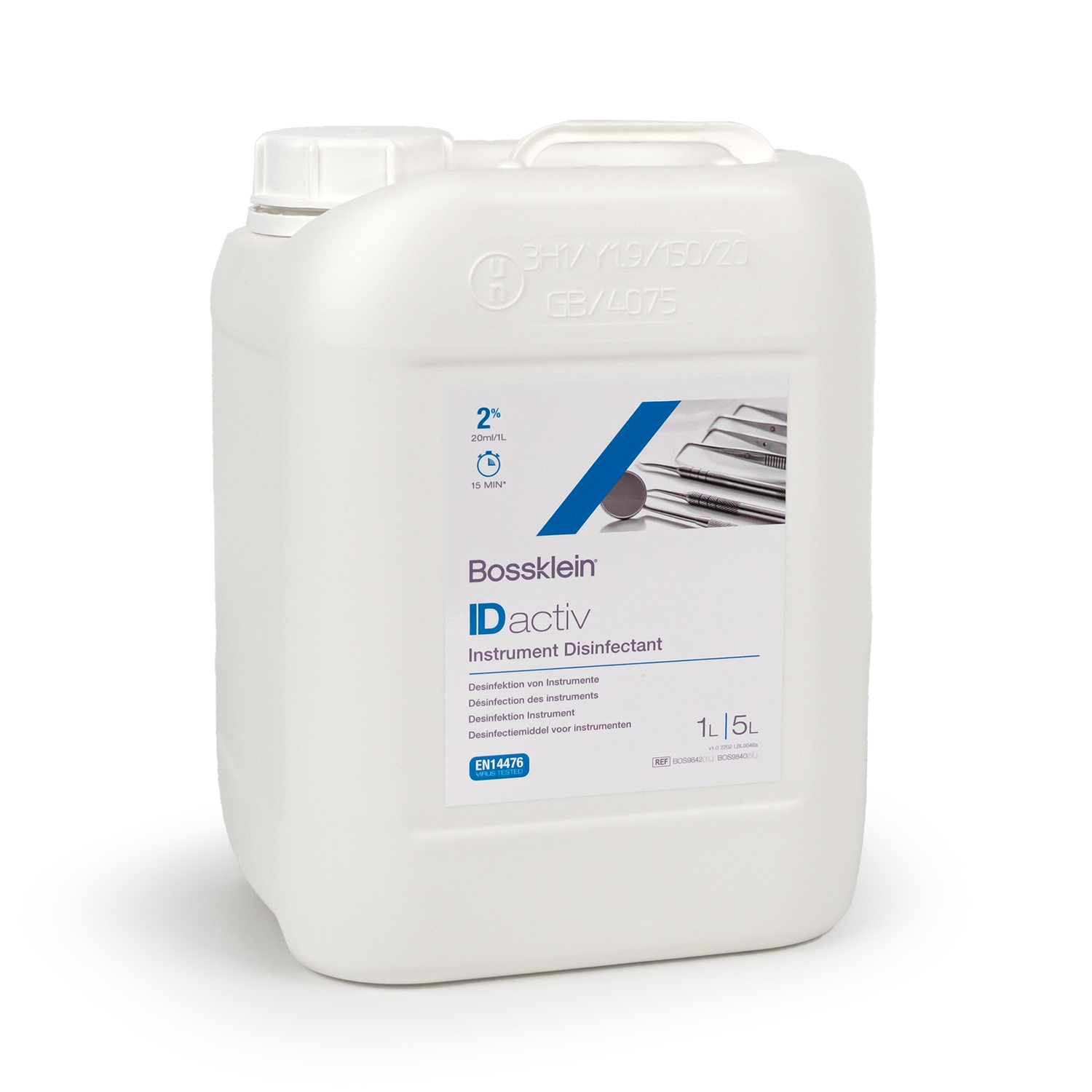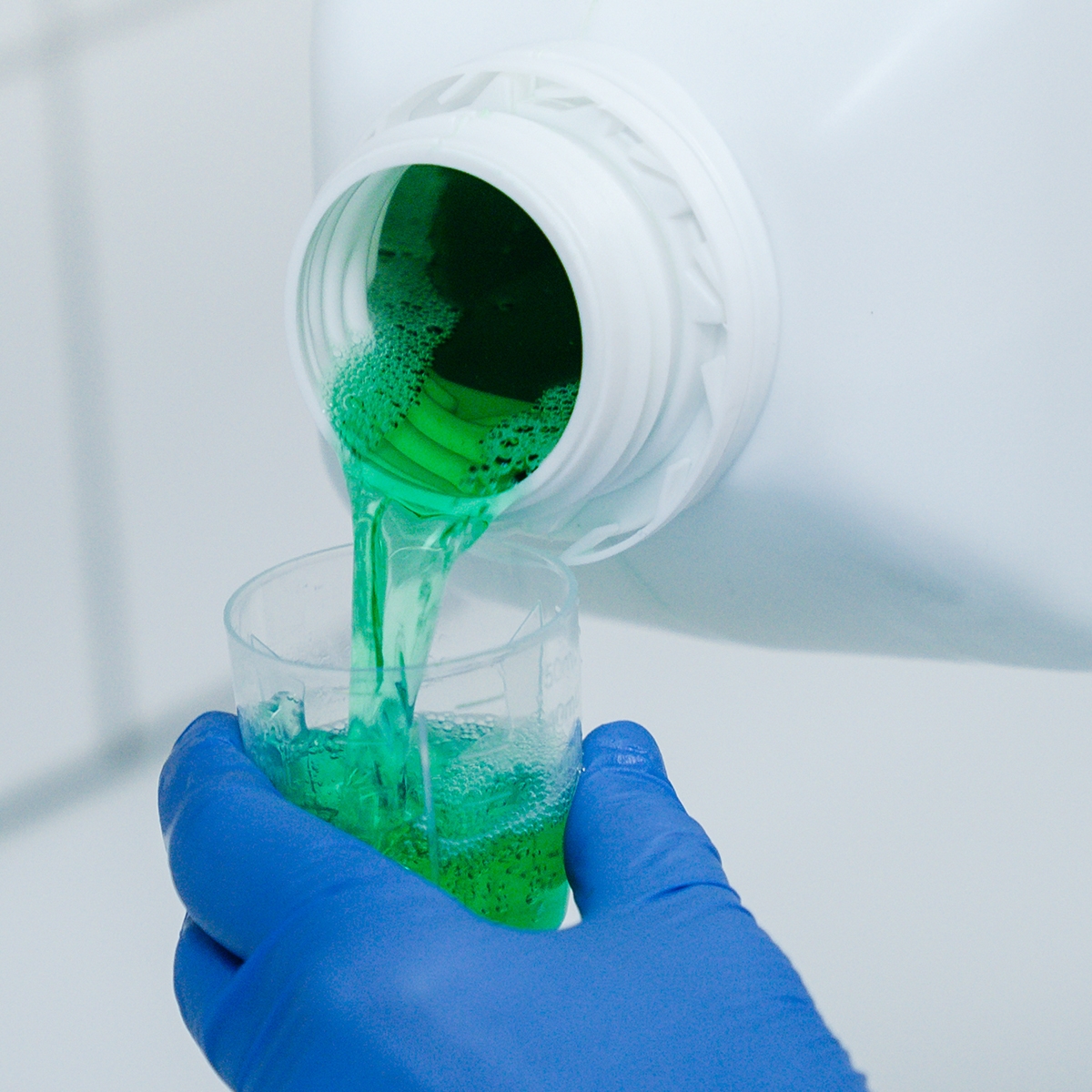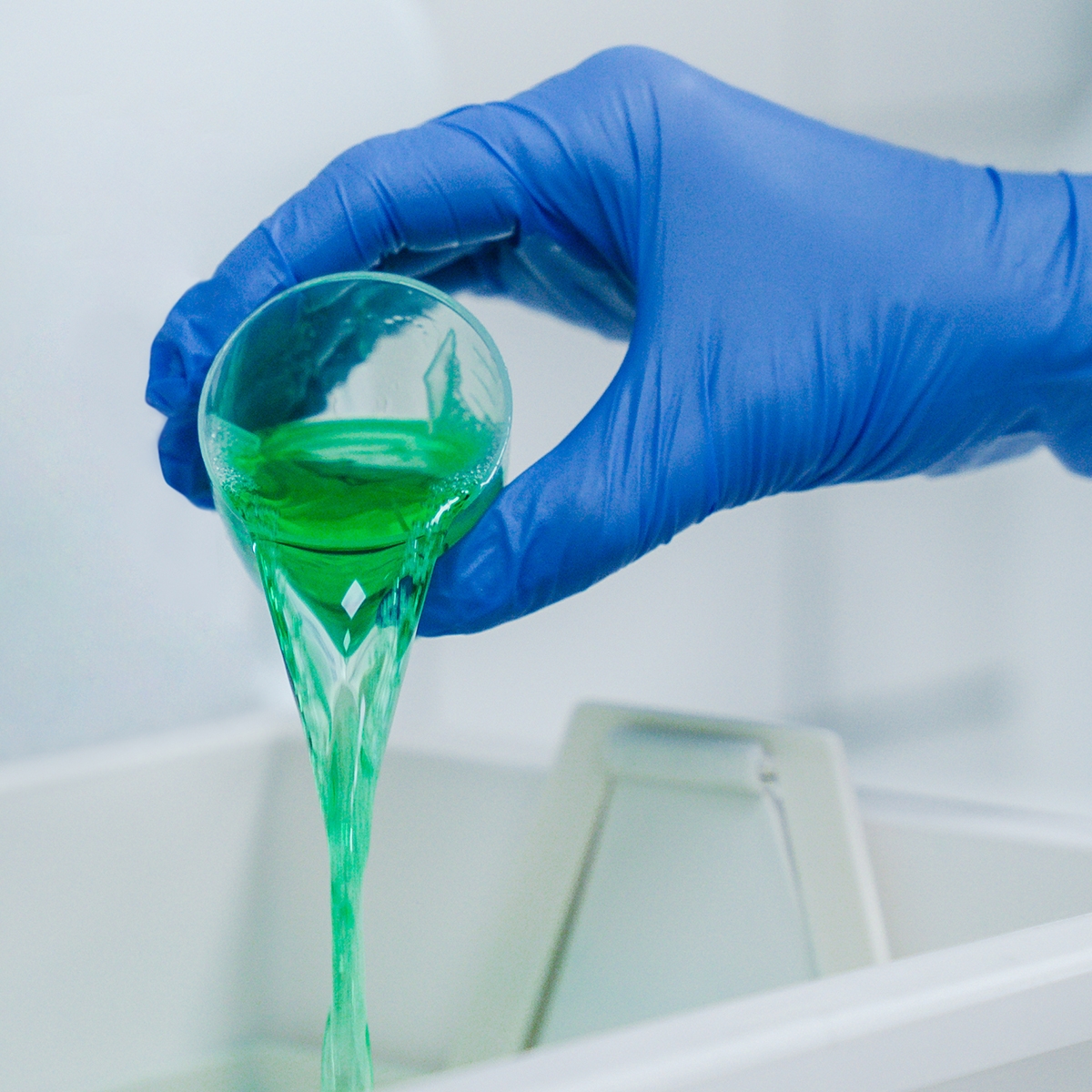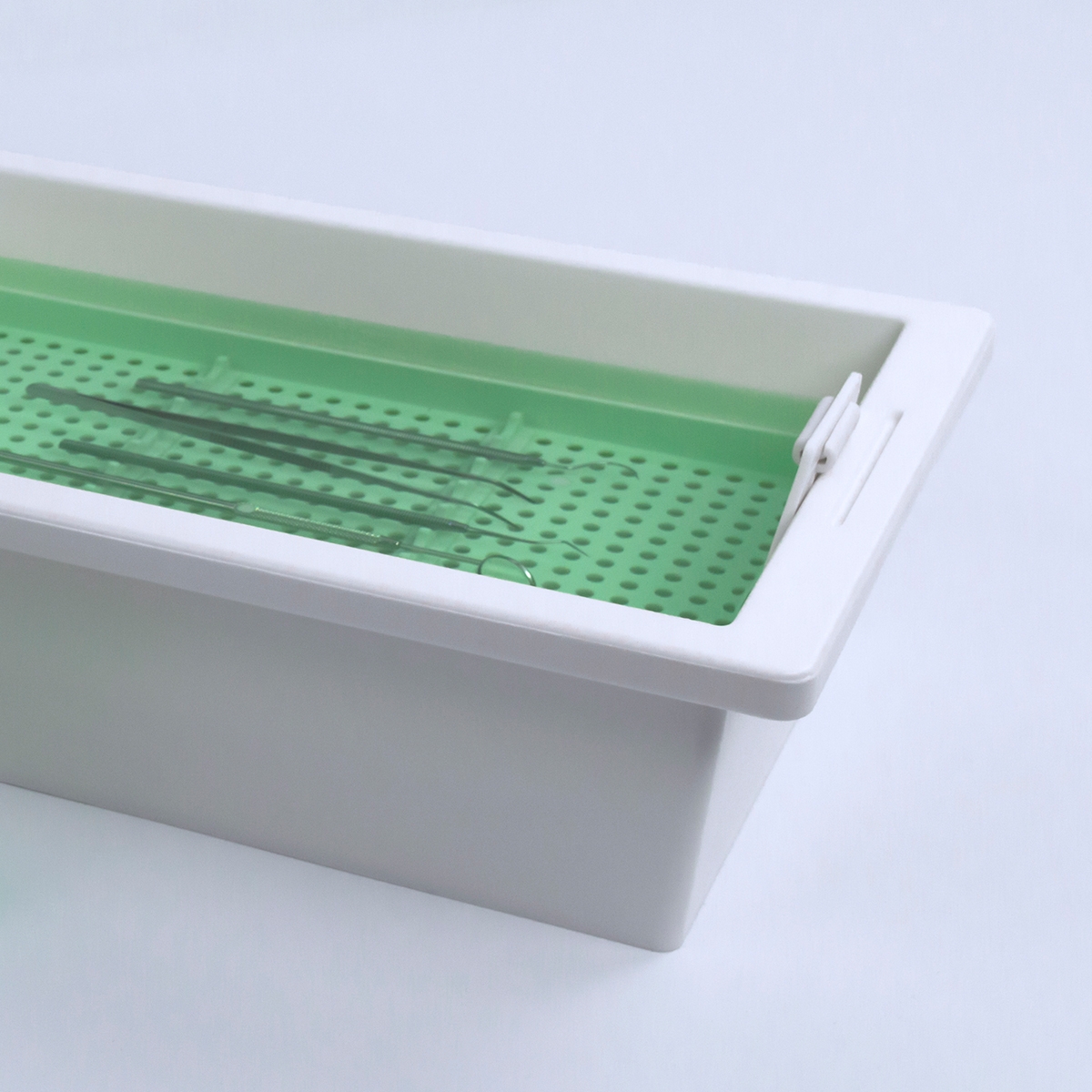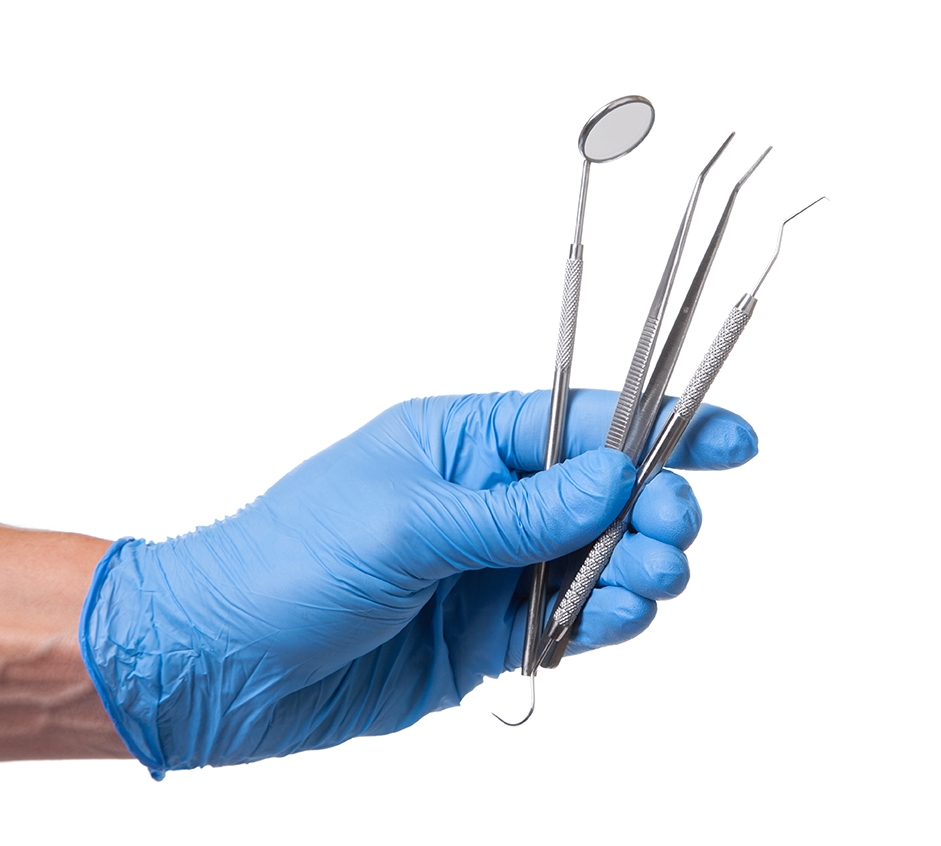IDactiv Instrument Disinfectant
Concentrated solution for the disinfection and cleaning of medical instruments and tools
Short soaking time, from only 15 mins
EN14476 virus tested
Active against TB
2% or 4% dilution ratio
Wide material compatibility
2 in 1: cleans & disinfects
Use inside instrument bath or ultrasonic bath
Safe to use on burs and rotating instruments
Mild Fresh aroma
| SKU | Variant Name |
|---|---|
| BOS9842 | 1L Dosing Bottle |
| BOS9843 | 2.5L Bottle with Dosing Cap |
| BOS9840 | 5L Bottle |
Downloadable Information
- Description
- Directions For Use
- Testing & Efficacy
- Product Composition
- Packing Details
- Hazard Classification & Details
- Physical Properties
- HTM 01-05 Compliance
Bossklein IDactiv is a class IIb registered medical device, designed for the disinfection and cleaning of manual instruments and tools prior to terminal sterilisation using the method of immersion inside an instrument or ultrasonic bath. Alternatively, IDactiv can also be used to disinfect many types of rotating instruments such as burs, diamonds and polishers inside the bur bath.
Directions For Use
Add 20ml ± 1ml to 980ml of clean water for a 2% solution, 40ml ± 1ml to 960ml for a 4% solution. To achieve full efficacy use a 4% solution for a 60 minute soaking time. After disinfection, rinse instruments thoroughly with RO or distilled water prior to further processing and sterilisation. Follow the reprocessing instructions from the instrument manufacturer. Change the solution daily. For professional use only.Testing & Efficacy
EN 14885, EN 14561, EN 14562, EN 14563, EN 14476, EN 14348, EN 13727, EN 13624, EN 21530Effective Spectrum & Exposure Times
| Micro-Organism | Contact Time | Concentration |
|---|---|---|
| Bactericidal | 15 min | 2% |
| Pseudomonas aeruginosa | 15 min | 2% |
| Staphyloccocus aureus | 15 min | 2% |
| Enterococcus hirae | 15 min | 2% |
| E. coli | 15 min | 2% |
| Salmonella typhimurium | 15 min | 2% |
| MRSA | 15 min | 2% |
| Legionella pneumophila | 15 min | 2% |
| Yeasticidal | 15 min | 2% |
| Candida albicans | 15 min | 2% |
| ENVELOPED VIRUSES | 15 min | 2% |
| Vaccinia virus | 15 min | 2% |
| Hepatitis B Virus (HBV) | 15 min | 2% |
| Hepatitis C Virus (HCV) | 15 min | 2% |
| HIV | 15 min | 2% |
| Human T Cell Leukemia virus | 15 min | 2% |
| Measles virus | 15 min | 2% |
| Hepatitis Delta Virus (HDV) | 15 min | 2% |
| Influenza virus | 15 min | 2% |
| Coronavirus | 15 min | 2% |
| Herpesviridae | 15 min | 2% |
| Filoviridae (Ebola) | 15 min | 2% |
| Rubella virus | 15 min | 2% |
| Rabies virus | 15 min | 2% |
| Flavivirus | 15 min | 2% |
| Poxviridae | 15 min | 2% |
| NON-ENVELOPED VIRUSES | ||
| Adenovirus 5 | 30 min | 4% |
| Norovirus | 30 min | 4% |
| MYCOBACTERICIDAL | 60 min | 4% |
| Mycobacterium avium | 60 min | 4% |
| TUBERCULOCIDAL | 60 min | 4% |
| Mycobacterium terrae | 60 min | 4% |
Product Composition
Aqua, N-(3-Aminopropyl)-N-Dodecylpropane-1,3-Diamine, N,N-Didecyl-N-Methyl-Poly(Oxyethyl) Ammonium Propionate, Alcohols, C9-11, Ethoxylated, Tetrasodium N,N-Bis(Carboxylatomethyl)-L-Glutamate, Monoethanolamine, Corrosion Inhibitor, Aroma, Dye.Packing Details
6 x 1L Bottles per box, 6 x 2L Bottles per box, 4 x 2.5L Bottles per box, 2 x 5L UN Approved Refill Bottles per boxHazard Classification & Details
UN: 1903, Packing group: III, Class: 8, Shipping name: DISINFECTANT, LIQUID, CORROSIVE, N.O.S. (N-(3-AMINOPROPYL)-N-DODECYLPROPANE-1,3-DIAMINE)Physical Properties
Green liquid, Mild Fresh aroma, pH 10.00-11.00, Shelf life of 3 yearsHTM 01-05 Compliance
3.3: Manual cleaning, governed by an appropriate protocol, is acceptable within the essential-quality-requirements framework. Within the best-practice framework, however, manual cleaning should be considered only where the manufacturer specifies that the device is not compatible with automated processes (including ultrasonic cleaning) or when the washer-disinfector is temporarily unavailable (for example for repair or validation). Exceptionally, where local experience indicates that pre-washing may be helpful (for example in the removal of tenacious dental materials), such action may be appropriate before automated cleaning.
3.4: New instruments should be cleaned and sterilized before using for the first time, unless supplied as sterile.
3.42: Effective cleaning of dental instruments before sterilization is of the utmost importance to reduce the risk of transmission of infectious agents.
3.5: Instruments cleaned as soon as possible after use may be more easily cleaned than those left for a number of hours before reprocessing.
3.6 When working with substances that can harden on instruments (for example cements), the instruments should be cleaned immediately. Instruments that cannot be cleaned should be discarded.
3.9: Manual cleaning should be considered where manufacturers’ instructions specify that the device is not compatible with automated processes.
16.3: Always use detergents specifically formulated for manual cleaning of instruments.
Scope Of Application
Veterinary
Professional Care
Dental
Opticians
Beauty and Wellbeing
Medical and Chiropody

